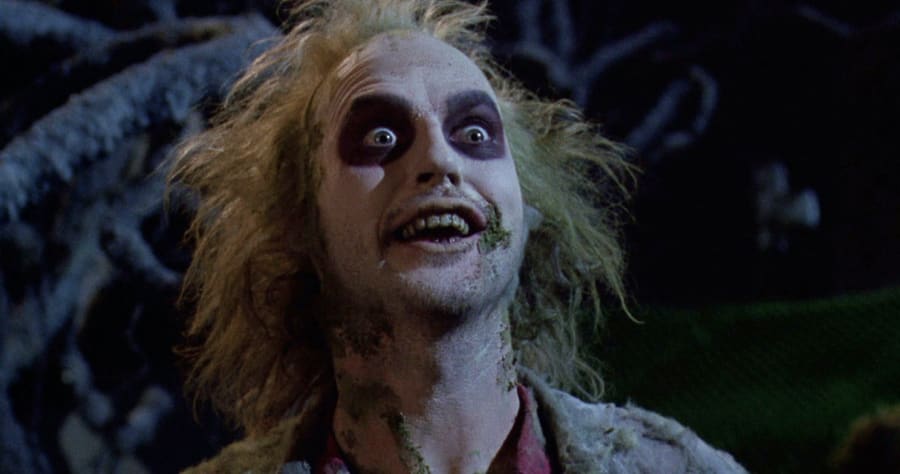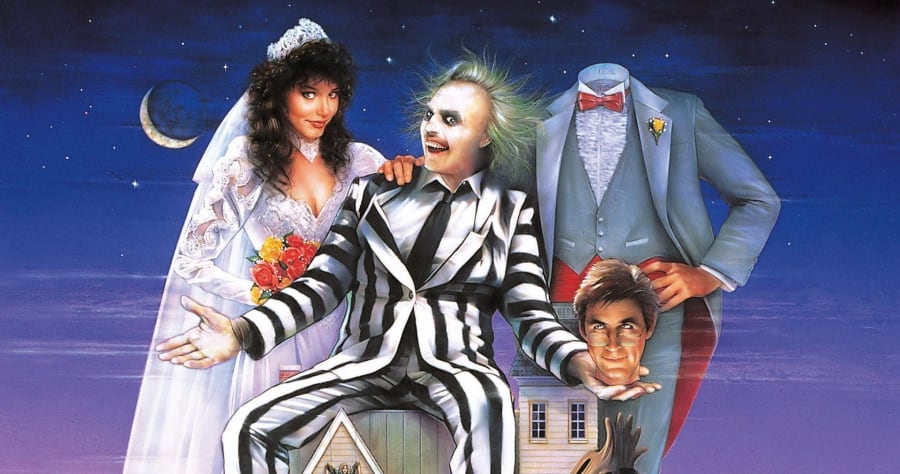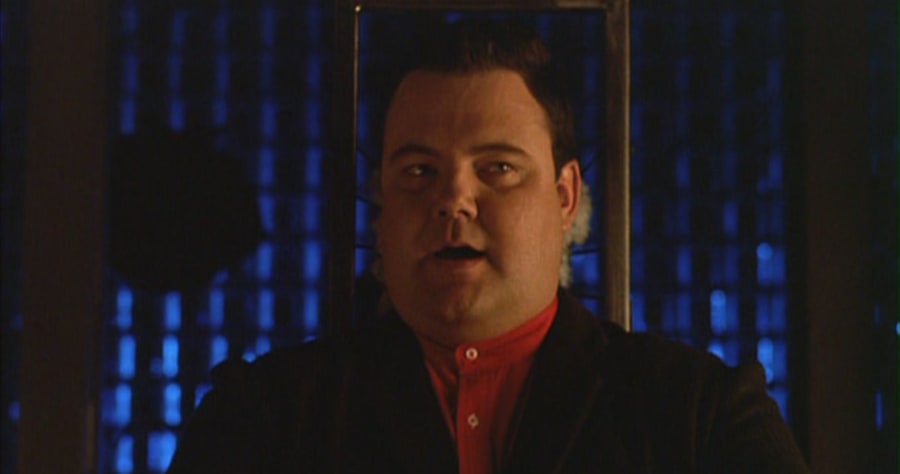 Say "Beetlejuice" three times and, whoosh! 30 years go by.
Say "Beetlejuice" three times and, whoosh! 30 years go by.
Released on March 30, 1988, "Beetlejuice" gave Michael Keaton and Winona Ryder career-defining roles, made Tim Burton an A-list director (and enabled him to make "Batman" with Keaton), spawned a popular animated series, and made viewers laugh so hard that they're still bugging Keaton to make a sequel. (Fingers crossed.)
Still, as often as you've re-watched the horror comedy over the past three decades, there's still plenty you may not know about "Beetlejuice," including who almost starred in it, how much darker it was supposed to be, which on-set romance blossomed into a marriage, and which titles were (thankfully) rejected. Put on some Harry Belafonte music and read on.
 1. "Beetlejuice" started out as a spec script by Michael McDowell, with revisions by Larry Wilson. Wilson showed it to an executive at Universal, who thought the script was too weird and awful and told Wilson he was committing career suicide by showing it around as a calling card. Nonetheless, McDowell and Wilson quickly sold the screenplay to producer David Geffen.
1. "Beetlejuice" started out as a spec script by Michael McDowell, with revisions by Larry Wilson. Wilson showed it to an executive at Universal, who thought the script was too weird and awful and told Wilson he was committing career suicide by showing it around as a calling card. Nonetheless, McDowell and Wilson quickly sold the screenplay to producer David Geffen.
2. Burton was looking for a follow-up to his debut film, the hit "Pee-wee's Big Adventure." He didn't like any of the wacky-comedy scripts he was getting (one became Bobcat Goldthwait's talking-horse farce "Hot to Trot"). But then Geffen gave him "Beetlejuice." As it turned out, Burton and McDowell had already worked together on an episode of "Alfred Hitchcock Presents" that McDowell wrote and Burton directed.
3. The early drafts of the screenplay were much darker, with more gore and violence, as well as more ethnic stereotyping in the character of Beetlejuice. The sequence of the group possession at the dinner party involved a vine-patterned rug coming to life to ensnare the guests, rather than the revised scene of the group being compelled to dance to calypso music. Writer Warren Skaaren was hired to revise the screenplay further.
4. Burton's initial idea for the title role was to cast Sammy Davis Jr. It was Geffen who suggested Michael Keaton.
5. Casting Winona Ryder as Lydia was much easier; Burton picked her because he'd liked her performance in high school drama "Lucas."
6. Burton got turned down by a number of actresses before finally settling on Winona Ryder for the role of Lydia Deetz. Previous candidates included Sarah Jessica Parker, Brooke Shields, Molly Ringwald and Diane Lane.
7. Anjelica Huston nearly played the part of Delia Deetz. It was only after Huston fell ill that Catherine O'Hara was cast as her replacement, and only after O'Hara initially declined the offer.
8. The film's outdoor scenes were shot in East Corinth, Vermont. Some of the sets had to be built from scratch, including the Maitlands' house and the covered bridge where they have their fatal accident. Interiors were largely shot on a Hollywood soundstage.
9. The movie's budget was a modest $15 million, including just $1 million for special effects. So most of the effects shots had to be done in camera, or with handmade stop-motion animated puppets that animator Burton added in post-production. Burton felt that the low-budget, hand-crafted effects created a surreal, shabby vibe that suited the story.
10. The production designer on the film was Bo Welch, who had designed sets on just one other film before (another horror comedy, "The Lost Boys"). Toward the end of the shoot, Burton encouraged Welch to ask out co-star Catherine O'Hara. He did, and the two eventually married.
11. Welch's inspiration for the vast bureaucratic limbo that is the movie's afterlife was the interior of the Johnson Wax building in Oklahoma, designed by Frank Lloyd Wright. The actual set was fairly small, no more than 75 feet wide, but was made to look bigger via matte paintings of columns stretching into the distance.
12. Warner Bros. wasn't fond of the title "Beetlejuice" (due to marketing reasons) and suggested the bland "House Ghosts" instead. Burton jokingly suggested "Scared Sheetless," only to learn to his horror that Warners kinda liked it and was seriously considering using it. 13. Late actor Glenn Shadix, who played Otho in the film, was so fond of the song "Day-O" that it was played during his funeral in 2010.
13. Late actor Glenn Shadix, who played Otho in the film, was so fond of the song "Day-O" that it was played during his funeral in 2010.
14. While "Beetlejuice" is notable for its use of catchy Harry Belafonte tunes like "Day-O," originally Burton planned on using an R&B-focused soundtrack for the film.
15. "Beetlejuice" earned $74 million at the domestic box office. It was the tenth biggest hit of 1988.
16. The hair and make-up that transformed Keaton into a rotting ghoul won an Oscar.
17. For decades, fans have asked Keaton, Ryder, and Burton whether there will ever be a sequel. One seemed to be brewing in recent years, with frequent Burton collaborator Seth Grahame-Smith writing the script, but Burton remained reluctant, and the project has apparently fizzled out. Nonetheless, there were plans to bring a "Beetlejuice" musical to Broadway by late 2018.
from Moviefone News RSS Feed - Moviefone.com http://ift.tt/2F6JxUg
via IFTTT
No comments:
Post a Comment